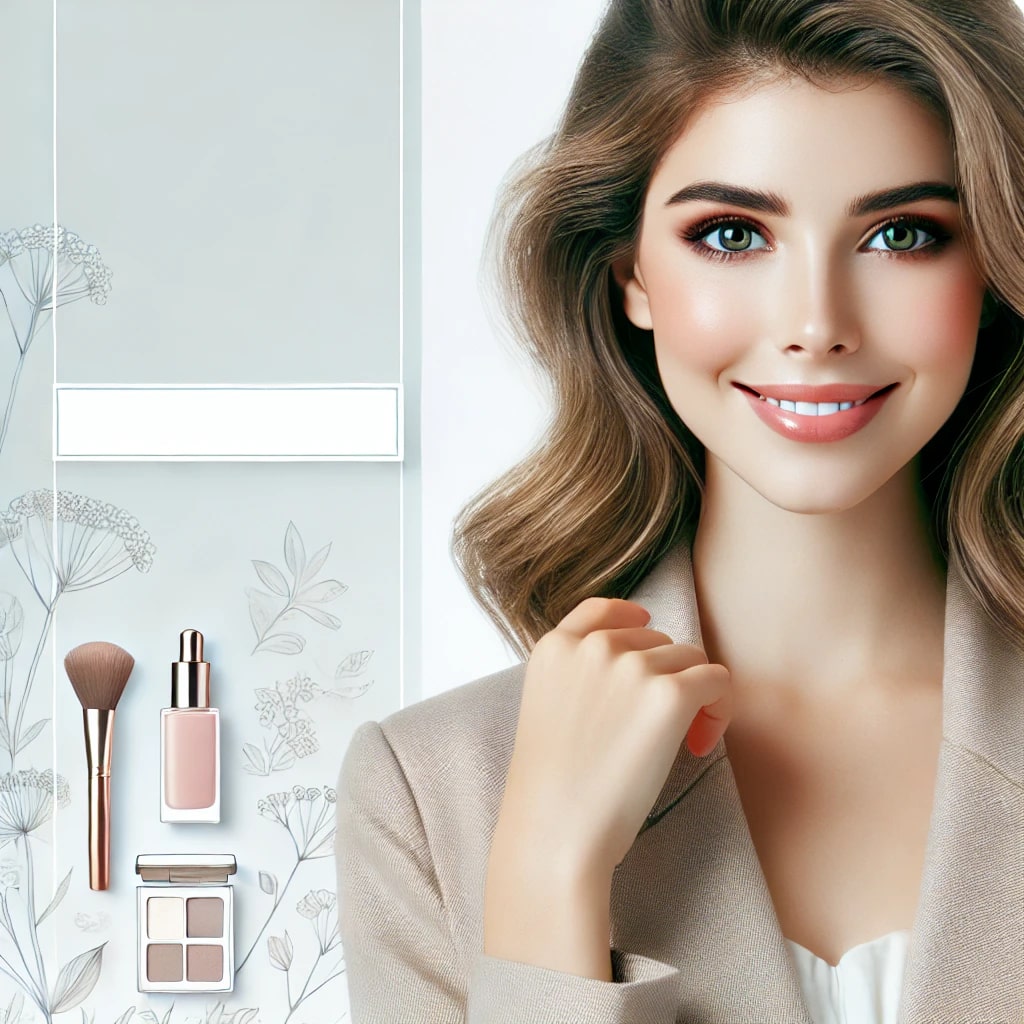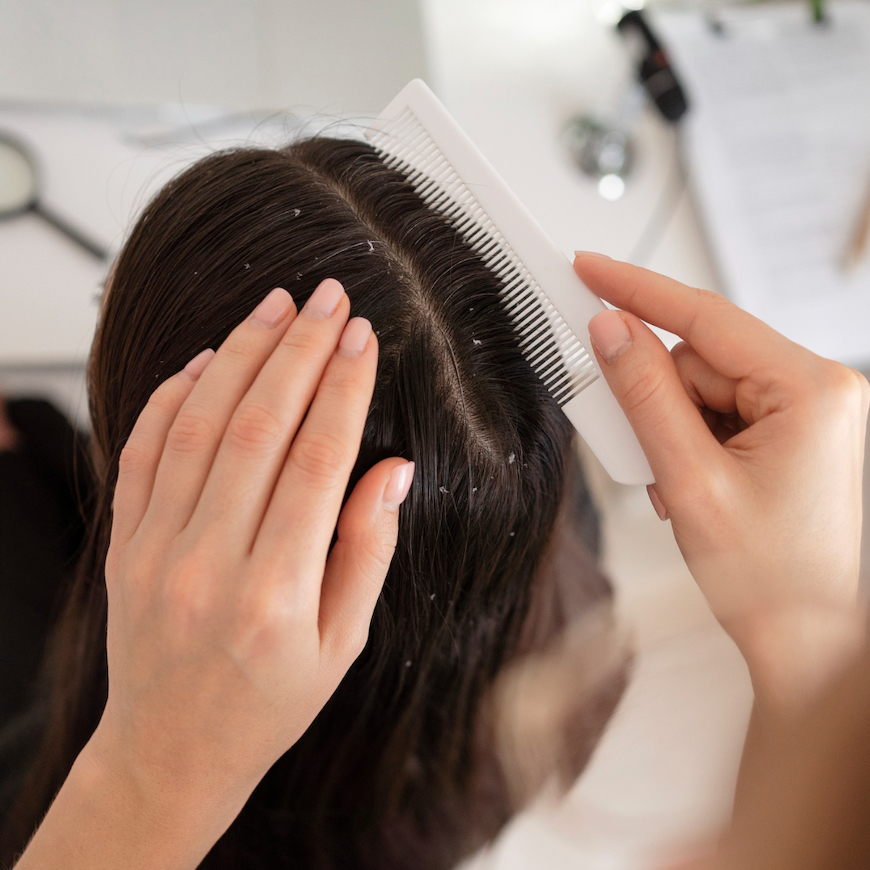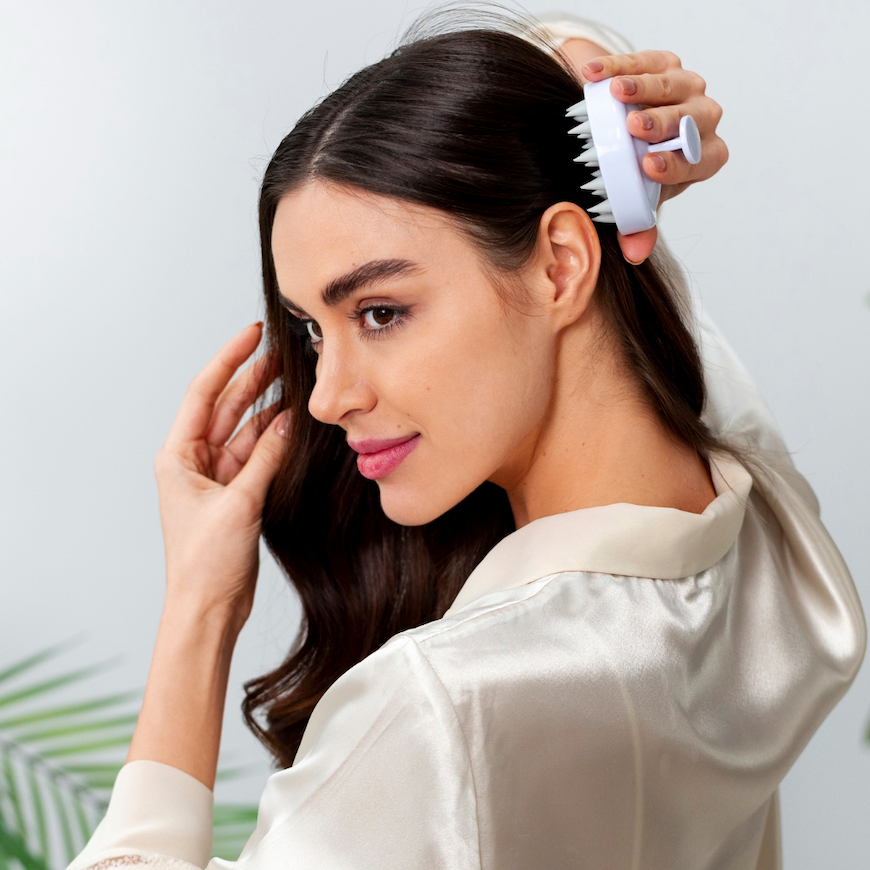Dandruff is a common scalp condition experienced by millions of people around the world. While it’s not harmful, it can be uncomfortable and embarrassing, often leading to flakes of skin visible on the scalp, hair, and clothing. These flakes are dead skin cells on the scalp, and when the skin on the scalp has too much oil (called sebum), the flakes fall off faster than before.
Dandruff can be caused by many things, including overgrowth of the Malassezia bacteria, overuse of hair care products, and certain skin conditions. problems. Fortunately, treatments such as special anti-dandruff shampoos are available over the counter or by prescription to help control dandruff.
Causes of Dandruff
- Dry Skin Dandruff: This is one of the most common causes of dandruff. Dry, cold weather can lead to dry skin on the scalp, causing it to flake. This type usually occurs due to excessive dryness of the scalp which causes dandruff to fall out. This type can be caused by bad weather, lack of moisture, or hair care products that strip the scalp of its natural oils.
- Oily Scalp: Excessive oil on the scalp can trap dead skin cells, leading to the formation of dandruff. When mixed with oil, these cells can clump together and appear more noticeable. As a result, you will experience oily scalp and more yellow dandruff.
- Not Washing Hair Enough: Irregular hair washing can allow oil and dead skin to accumulate, leading to dandruff formation. Not washing your hair regularly can lead to a buildup of oil, dead skin cells, and dirt on the scalp. This creates an environment where dandruff can form, making flakes more noticeable and potentially causing irritation.
- Malassezia Fungus: This fungus naturally lives on the scalp but can sometimes grow out of control. This can irritate the scalp, leading to increased skin cell turnover, resulting in dandruff. Malassezia works on sebum, and too much oil can cause fungal growth, causing inflammation and scaling of the skin.
- Hormonal imbalances, weakened immune systems, and skin conditions can disrupt the balance of the scalp and cause dandruff. Although these factors make dandruff more difficult to manage, treating the underlying health problem can help with symptoms, although treatment may be more difficult.
Symptoms of Dandruff
The primary symptom of dandruff is the presence of white or yellow flakes on the scalp, hair, or shoulders. Symptoms of dandruff usually affect the scalp, but sometimes it can spread to other areas such as eyebrows, ears, beard, neck or tail. Common symptoms include:
- Itchy scalp: A common sign, especially if caused by irritation or fungus.
- Scaly patches: In some cases, dandruff can cause inflamed, red patches on the scalp.
- Oily scalp: Excessive oil can lead to greasy dandruff, making the scalp appear shiny and oily.
Treatment of Dandruff
There is no cure for dandruff, but treatment can reduce the visible symptoms of dandruff and relieve uncomfortable symptoms. The treatment varies based on the underlying cause and the intensity of the symptoms.
Medicated Shampoos: The most common treatment, anti-dandruff shampoos contain ingredients like zinc pyrithione, selenium sulfide, ketoconazole, and salicylic acid. These help control fungus, reduce inflammation, and prevent excess skin cell buildup.
- Zinc Pyrithione: Targets the fungus that can contribute to dandruff.
- Selenium Sulfide: Slows down skin cell turnover and reduces Malassezia fungus growth.
- Ketoconazole: A powerful antifungal agent that treats dandruff caused by fungi.
- Salicylic Acid: Helps exfoliate and remove excess skin cells.
How to Prevent Dandruff
Dandruff cannot always be prevented, but simple hair care can help with symptoms and prevent dandruff attacks. This may include:
- Clean regularly: Regularly wash your hair to prevent oil and dead skin buildup. Keep your scalp clean by washing your hair regularly using a mild anti-dandruff shampoo that suits your hair type.
- Avoid harmful chemicals and hair care methods: Minimize the use of hair care products that contain alcohol and allergens, and reduce the use of products that contain harmful chemicals, such as hair dye .
- Managing stress: Stress can make dandruff symptoms worse, so practicing stress-reducing and relexation techniques like yoga, meditation, or exercise can help.
When to See a Doctor
If over-the-counter treatments and home remedies aren’t improving your dandruff, or if your scalp becomes excessively red, swollen, or painful, it’s important to consult a dermatologist. Persistent or severe dandruff could be a sign of an underlying skin condition like psoriasis or eczema.

Hi, I’m Emma R. ✅
Passionate beauty blogger sharing expert tips, honest reviews, and the latest trends to help you glow inside and out.




